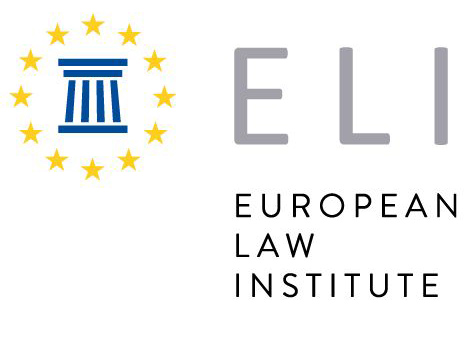The session was opened by Pietro Sirena (ELI Treasurer; Dean and Professor, Università Bocconi) who commended the extensive work of the project team and highlighted the rigorous review process that shaped the final outcome. Reflecting on his involvement throughout the project’s lifecycle as a member of the ELI Executive Committee and Council, he emphasised the significance of the Principles and Guidance for Enforcement Against Digital Assets (ELI PGEADA) in addressing a fast-evolving area of law. Sirena noted the importance of providing legal certainty and coherence in enforcement procedures involving digital assets, particularly in cross-border contexts.
Teresa Rodríguez de las Heras Ballell (ELI Co-Reporter; Professor, Universidad Carlos III de Madrid) introduced the first half of the instrument, outlining the policy decisions and scope that underlie Principles 1 to 5. These Principles address the substantive legal dimensions of enforcement, including the definition of digital assets, their property status, and the rationale for enforcing them based on their economic value. Rodríguez de las Heras explained that the instrument builds upon existing international efforts, particularly those of UNIDROIT, and aims to complement frameworks such as the UNIDROIT Principles on Digital Assets and Private Law. She underscored the goal of ensuring that enforcement is not hindered simply because an asset is digital, and stressed the importance of harmonising applicable law and jurisdiction rules to ensure effectiveness in cross-border enforcement.
Jos Uitdehaag (First Vice-President, International Union of Judicial Officers; ELI Co-Reporter) presented Principles 6 to 10, which focus on the procedural and practical aspects of enforcement. He addressed the challenges posed by the anonymity and borderless nature of digital assets, noting the limited powers enforcement agents often have when searching for or accessing digital wallets. Uitdehaag argued for the introduction of designated digital wallets, similar to designated bank accounts used in traditional enforcement, to ensure secure and transparent handling of seized digital assets. He also stressed the need for greater cross-border cooperation, technical training for enforcement professionals, and the integration of expert support to manage technologically complex enforcement scenarios.
Anna Veneziano (Deputy Secretary General, UNIDROIT) highlighted the strong synergies between the ELI PGEADA and UNIDROIT’s Best Practices for Effective Enforcement, particularly in their shared emphasis on recognising digital assets as enforceable and on tailoring procedural tools to asset-specific characteristics. She outlined the background of the UNIDROIT project, including its origins in collaboration with institutions such as the World Bank and its pending approval by UNIDROIT’s Governing Council. Veneziano also drew attention to complementary goals in both instruments, including the need for proportionality, adequate valuation methods, and safeguards for debtors' rights.
Hideki Kanda (Emeritus Professor, University of Tokyo) provided a theoretical reflection on the relationship between enforcement costs and the harmonisation of substantive legal rules. He argued that differences in enforcement costs across jurisdictions could either facilitate or hinder convergence in digital asset laws. Kanda suggested that international efforts should focus less on harmonising enforcement mechanisms and more on reducing the cost and complexity of enforcement, especially in technologically advanced contexts. He also underscored the broader implications of digital asset enforcement for Asian jurisdictions, where legal systems vary widely.
Marek Dubovec (Director of Law Reform Programs, International Law Institute; Professor, University of Arizona) offered a transatlantic perspective, drawing on his experience with the drafting of the Uniform Commercial Code in the United States. He explored the complexities of linked assets, digital assets that reference real-world property, and emphasised the challenges they pose for enforcement, including identifying the governing law and recognising the legal effect of a transfer. Dubovec called for more clarity around regulatory definitions, the role of custodians, and the possible use of emerging legal technologies such as interoperable registries. He also raised the need for procedural remedies in cases of wrongful enforcement and discussed how enforcement principles might adapt to decentralised or state-issued digital currencies.
The presentations were followed by a lively discussion, during which attendees raised questions concerning enforcement against immovable property linked to digital tokens, the classification of online gaming and social media accounts as digital assets, and the legal reforms necessary to support designated digital wallets for enforcement agents.
More information about the ELI Project on Access to Digital Assets is available here.
The recording of the webinar is available below.

